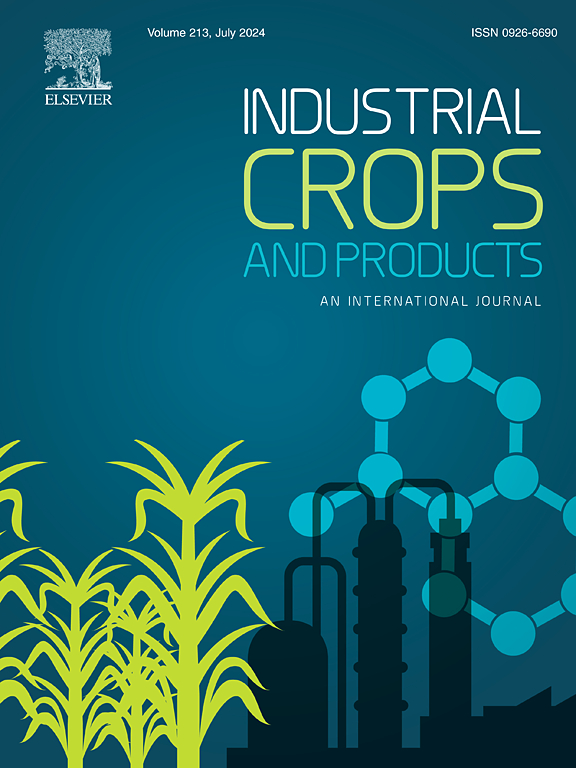Ultrasonic-assisted water extraction from Eucalyptus globulus leaves and branches, to obtain natural textile dyes with antioxidant properties
IF 5.6
1区 农林科学
Q1 AGRICULTURAL ENGINEERING
引用次数: 0
Abstract
Forestry is an interesting source of fibres and metabolites with high applicability for the textile industry and one of the main alternatives to reduce its high environmental impact. In recent years, the use of forest raw-materials as sources of dyes and natural fibres for the textile industry has gained interest due to environmental and sustainability concerns. The feasibility of the valorisation of Eucalyptus globulus small branches and leaves (BLE) as a raw material in the production of extracts that allows the production of functional dyed textiles with antioxidant properties was evaluated. The ultrasound-assisted extraction (UAE) in water methodology was used, as it is environmentally friendly, and the impact of the BLE particle size distribution on the phenolic content and antioxidant activity of the extracts was determined. Chemical characterisation of the extracts was performed by LC-ESI-LTQ-Orbitrap-MS and FTIR. The extracts obtained were used to dye and functionalise cotton textile samples, evaluating the effect of using alum as a mordant and NaOH as a pH modifier on the properties of the dyed textile products. It has been shown that it is possible to obtain dyed textile products with interesting colour and light fastness properties only by using BLE extracts as natural textile dyes. Furthermore, the dyed textile products obtained showed interesting antioxidant properties, with the best results obtained when only BLE extracts were used as dyes.

求助全文
约1分钟内获得全文
求助全文
来源期刊

Industrial Crops and Products
农林科学-农业工程
CiteScore
9.50
自引率
8.50%
发文量
1518
审稿时长
43 days
期刊介绍:
Industrial Crops and Products is an International Journal publishing academic and industrial research on industrial (defined as non-food/non-feed) crops and products. Papers concern both crop-oriented and bio-based materials from crops-oriented research, and should be of interest to an international audience, hypothesis driven, and where comparisons are made statistics performed.
 求助内容:
求助内容: 应助结果提醒方式:
应助结果提醒方式:


